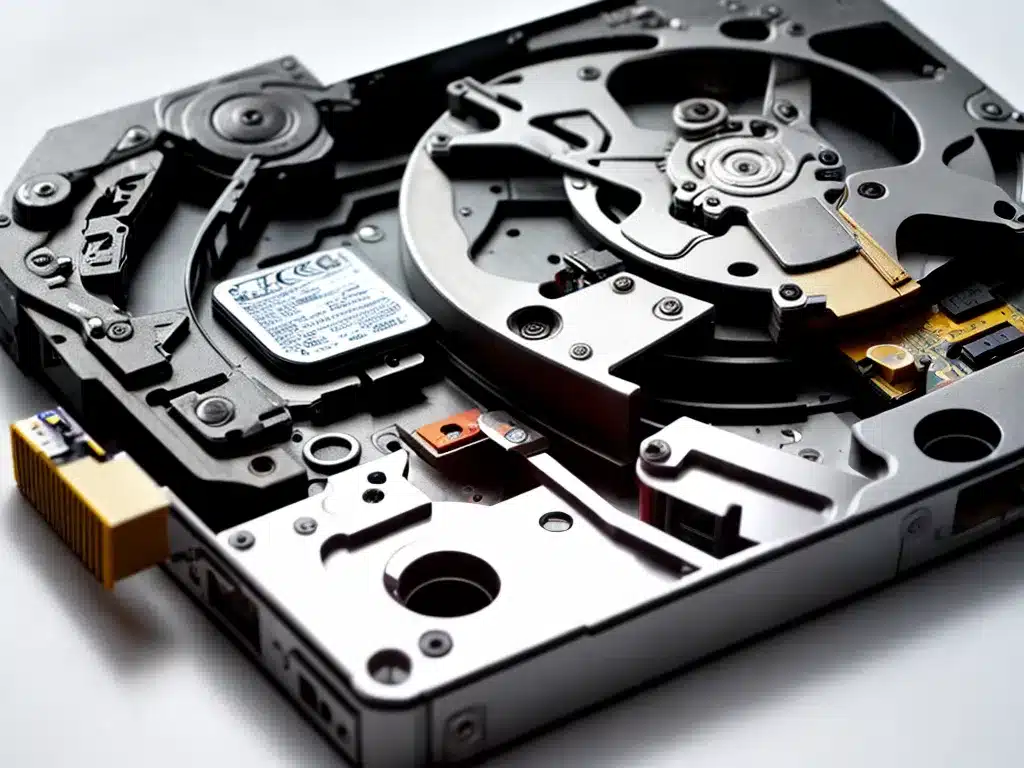Introduction
A solid state drive (SSD) failing to be detected is a frustrating issue. As your primary storage device, you expect the SSD to just work – storing your operating system, applications, and personal files reliably. But SSDs, like all tech devices, can unexpectedly fail. When your SSD suddenly stops working and your computer doesn’t detect it anymore, it’s natural to panic. However, in many cases, a dead or undetected SSD can be repaired. This guide will walk you through the common reasons an SSD is not detected, and the steps I take to try fixing it.
Reasons An SSD Is Not Detected
There are a few main reasons why an SSD may not be detected by your computer:
Loose Connections
The most common and easiest to fix reason an SSD is not detected is because it has become partially unplugged from the motherboard or interface cable. Over time, connectors can wiggle loose from moving your computer. Reseating the SSD connectors will often fix detection issues.
Outdated Drivers
If the SSD worked previously, suddenly stops being detected, and you’ve ruled out loose connections, an outdated driver is a likely culprit. Keeping your SSD driver updated is key to maintaining maximum compatibility and performance. Updating to the latest driver often resolves sudden SSD detection failures.
Power Issues
SSDs require consistent, stable power to operate. If the SSD is not receiving sufficient power, has an unstable power supply, or sustained a voltage spike, the drive can essentially become unresponsive. Troubleshooting power issues impacting the SSD can get it detected again.
Partition Table Corruption
The partition table tells the operating system where to find the SSD’s partitions and data. If this critical table becomes corrupted or damaged, the operating system will be unable to detect the SSD. Tools exist to repair corrupt partition tables, which can fix the detection problem.
Electrical Failure
In worse cases, an SSD may fail outright and be completely undetectable due to internal electrical issues. This is most common in older SSDs. Attempting an SSD repair to replace damaged components can sometimes recover these drives.
Logical Failure
Logical failures relate to the SSD’s firmware and operations rather than its electronics. For example, serious file system errors can make an SSD undetectable. Low-level SSD tools have the ability to correct these logical errors and get the drive recognized again.
Troubleshooting Steps To Fix An Undetected SSD
With the major reasons why an SSD can fail to be detected in mind, here are the key steps I take when troubleshooting a dead SSD:
1. Check All Connections
The first step is to remove the SSD and reseat it in the M.2 or SATA port to ensure a snug connection. Loose connections account for many failures, so this basic step resolves many apparently “dead” SSDs.
2. Update SSD Driver
If the SSD still isn’t detected, updating to the latest SSD driver from the manufacturer’s website is the next action to take. An outdated driver can cause compatibility issues.
3. Try a Different Port
Try moving the SSD to a different M.2 slot or SATA port on your motherboard. Use a SATA to USB adapter if needed to connect it externally. This verifies detection issues are with the drive, not a bad port or interface.
4. Test the Power Supply
Check voltage levels going to the SSD with a multimeter. Power issues can make an SSD appear dead. Test with a known-good power supply if available.
5. Connect the SSD Externally
Attaching the SSD externally using a USB enclosure or adapter puts less strain on the electronics. Connecting externally via SATA or USB can resurrect an SSD with internal power or connection faults.
6. Update BIOS/Firmware
Outdated system BIOS or SSD firmware can cause compatibility issues leading to no detection. Check for updates from your system/motherboard and SSD manufacturers.
7. Low-Level SSD Repair Tools
If the above steps don’t work, low-level SSD diagnostic tools like HDD Regenerator can be used to scan for and repair corrupted modules. This can fix partition table issues or file system errors.
8. SSD Repair Service
For SSDs with electrical failure or internal damage, a professional SSD recovery service is needed. They can perform specialized repairs like replacing failed components or rebuilding the drive’s architecture.
Preventing Future SSD Failure
Once you’ve managed to get your SSD detected again, these tips will help avoid similar issues occurring down the track:
- Keep SSD drivers and firmware updated
- Use high quality surge protectors to avoid power spikes
- Don’t move your computer when the SSD is active
- Enable TRIM to maintain optimal performance
- Monitor SSD health metrics with tools like CrystalDiskInfo
- Maintain backups in case the SSD does ultimately fail entirely
While an undetected SSD can cause panic, in most cases it can be repaired with the right troubleshooting steps. But it’s still wise to keep backups to protect your data in case the drive fails completely.













